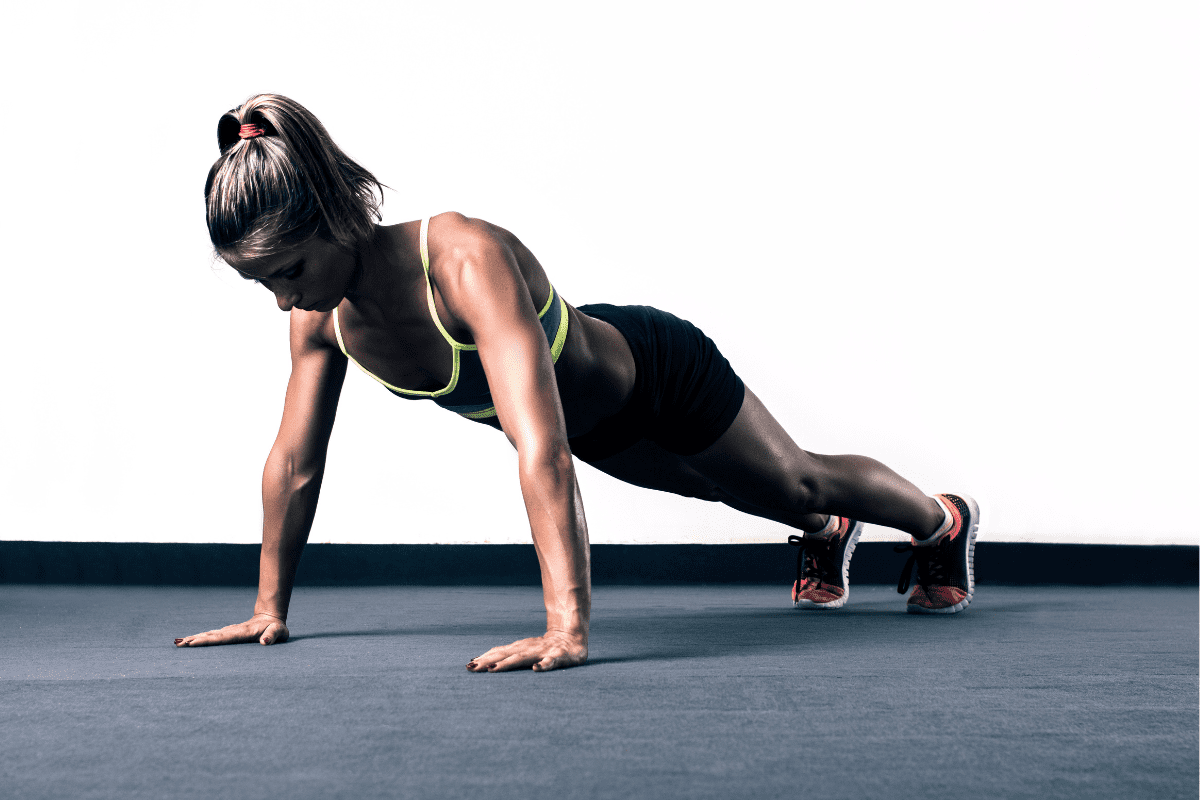11 Push-Up Alternatives For Size and Strength
Push-ups are a classic exercise that targets the chest, shoulders, and triceps.
But, they can be challenging for beginners or those with wrist or shoulder injuries. If you’re looking for ways to mix up your training program or want to try some new exercises to target the same muscles, this article is for you. I’ll be discussing a variety of Push-up alternatives that you can try to improve upper-body strength and muscle mass.
So whether you’re a seasoned lifter or just starting out – if you’re looking for Push-up alternatives, you’re in the right place. I’m sharing 11 of my favorites with you.
Push-Up Alternatives
I’ve tried to include as much variety in this list as possible. I have exercises that use all different kinds of equipment – dumbbells, barbells and even one that requires barely any equipment at all. I’ve also tried to include both beginner-friendly and more advanced movements as well.
Hopefully, regardless of what equipment you have access to or what your level of experience is, at least one of these Push-up alternatives is just what you’re looking for.
Dumbbell Bench Press
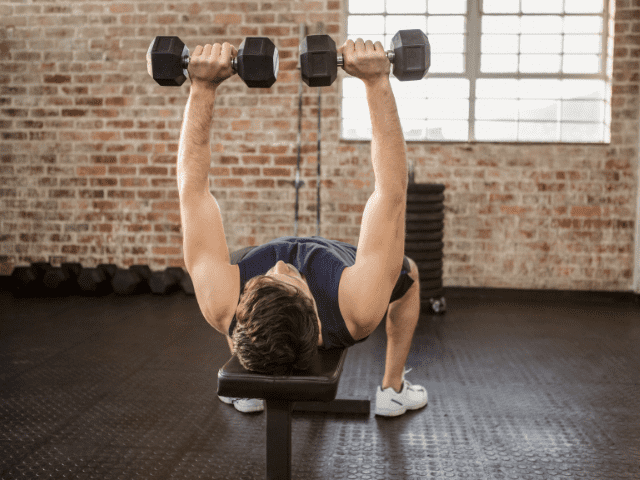
One of my first suggestions to replace Push-ups is Dumbbell Bench Press. Dumbbell Bench Press is an excellent option for developing upper body strength and will work basically the same muscles as Push-ups.
They’re also beginner-friendly which makes them very accessible for most lifters.
Step-by-Step Instruction
- Grab your dumbbells, sit on the edge of the bench, and sit the dumbbells on your thighs vertically.
- Take a deep breath, lie flat on your back on the bench, and get your dumbbells in position ready to press.
- Keep your feet flat on the floor.
- Keep your butt on the bench.
- Pull your shoulder blades together and keep the back of your head on the bench. You will slightly arch your back. Keep your core tight and keep the shoulder blades pulled back tight.
- The dumbbells should be slightly angled (representative of the path you are descending with your elbows).
- Press the dumbbells up.
- Control the dumbbells down during the eccentric movement and draw the dumbbells in, keeping the elbows at about a 45-degree angle away from the torso.
- The dumbbells will make contact with your torso right at the nipple line on the chest.
- Once contact is made, drive the dumbbells back up.
Coaching Points
Dumbbell Bench Press is a very shoulder-friendly pressing movement. Because the implement is a dumbbell, the range of motion is increased, the shear force on the shoulder is decreased, and the shoulder stabilizing muscles are engaged.
Feet Elevated Push-ups
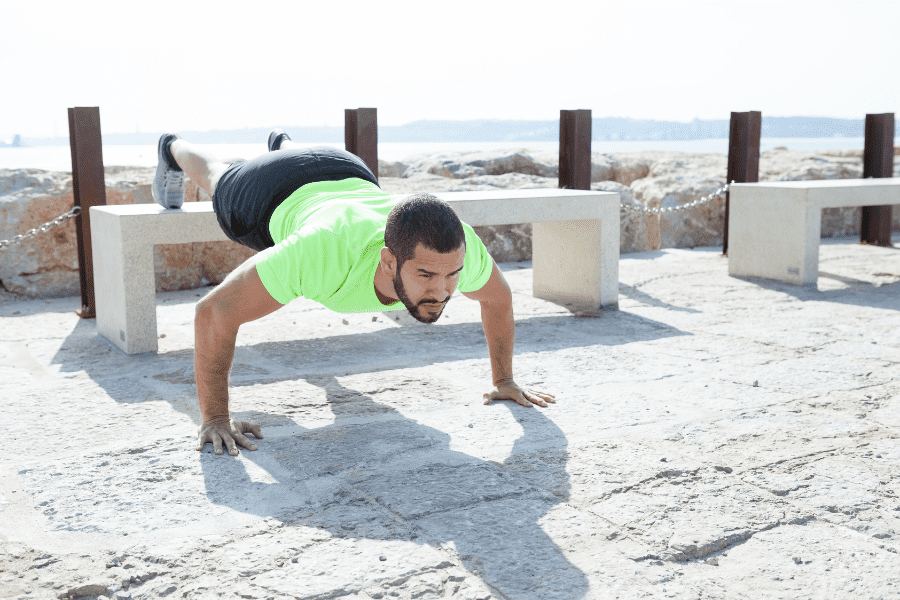
If you like Push-ups, but they’re just not as challenging as they used to be, then consider giving Feet Elevated Push-ups a try. All you need is a box, a stack of weight plates or even a bench as in the pic above.
By elevating the feet, you’re placing more of your bodyweight onto your upper-body and therefore increasing the difficulty of the exercise.
Step-by-Step Instruction
- Lie face down on the floor and place your feet up on a bench or box.
- Pull your toes in so that you’re on the tip of your shoes.
- Eyes should be focused straight down or slightly up.
- Pull your hands close to about the nipple line of the chest and bring them out about 2-3 inches away.
- Take a deep breath, engage the core and brace.
- Push yourself up in one unit. There should be no sagging of the waist. The entire body from head to toe should move up and then back down in unison.
- Lock out your push-up and pause.
- Slowly lower yourself back down and get ready for the next repetition from just above the ground.
Coaching Points
When doing Feet Elevated Push-ups keep the elbows at a 45-degree angle. For maximal chest, shoulder, and rotator cuff engagement, do not let the elbows flare out away from the middle. Also, do not let the elbow hug right next to the torso.
Bench Press
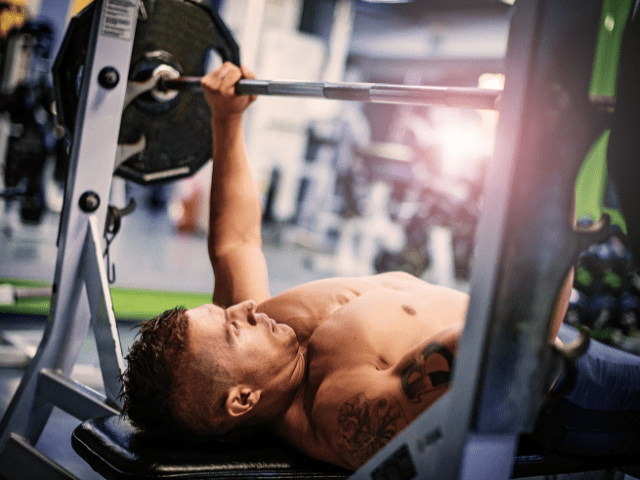
Next to Pull-ups, Barbell Bench Press is perhaps the single best movement for building upper-body strength so it would be crazy not to include it here.
If you have a spotter and are able to Bench Press, it’s a great Push-up alternative.
Step-by-Step Instructions
- Bar Setup: Set the barbell on a bench press rack and load it with the desired weight.
- Starting Position: Lie on the bench with your eyes directly under the bar. Plant your feet flat on the floor.
- Grip: Grasp the bar with hands slightly wider than shoulder-width, palms facing away from you.
- Unrack: Lift the bar off the rack and position it above your chest with arms fully extended.
- Descending Phase: Lower the bar to your mid-chest, keeping your elbows at a 75-90 degree angle.
- Ascent: Push the bar back up to the starting position, fully extending your arms.
Coaching Points
When doing Bench Press, do not let the elbows flare out away from the midline. The shoulders are incredibly vulnerable in these positions and the sheer force placed on the shoulders will lead to injury if the technique is not made a priority.
Alternating Dumbbell Bench Press
Most Bench Press variations will make good Push-up alternatives because they’re going to work the same muscle groups.
One of my favorite variations is Alternating Dumbbell Bench Press. By Alternating the dumbbells, one stays in the air at all times which is very beneficial for developing extra shoulder stability while you Bench.
Step-by-Step Instructions
- Sit on the edge of the bench with dumbbells resting on each thigh.
- Lay back on the bench and press both dumbbells to full extension.
- Now, lower the right dumbbell down to just outside the chest, keeping the elbow at roughly a 45-degree angle to the body.
- Press that dumbbell back up to full extension.
- Next, lower the opposite dumbbell down, same as the first, and press back to extension.
Coaching Points
Hold and stabilize the non-repping arm at full extension and only rep one dumbbell at a time. As the arms begin to fatigue, you may find one (or both) arms start to drift down as you’re repping the opposite arm. Try to keep that opposite dumbbell pressed at full extension!
Don’t turn Alternating Dumbbell Bench into a ‘piston-pumping’ type action. I’ll see athletes that will have one dumbbell going up at the same time the other is going down. Keep one dumbbell at extension until the opposite rep is completed.
Need a Training Program?
Visit the Horton Barbell Shop and Use Code “HB10” for 10% Off ANY Program!
Incline Barbell Bench
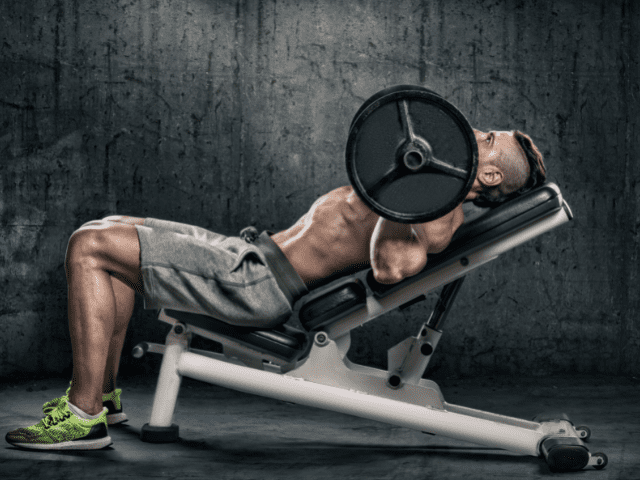
Another Push-up alternative that is a Bench Press variation is Incline Bench Press.
Incline Bench Press will target more of the upper chest, so depending on what you’re wanting to emphasize it can be a great option.
Step-by-Step Instructions
- Set Up: Adjust the bench to a 15-30 degree incline. Set the barbell on the rack.
- Starting Position: Sit on the bench, feet flat on the floor. Lie back and ensure your head and back are firmly on the bench.
- Grip: Grasp the bar with hands slightly wider than shoulder-width, palms facing forward.
- Unrack: Lift the bar off the rack and hold it above your upper chest with arms fully extended.
- Descending Phase: Lower the bar to your upper chest in a controlled manner.
- Ascent: Press the bar back to the starting position, extending your arms fully.
Coaching Points
Do not let the elbows flare out away from the midline when doing Incline Bench Press. The shoulders are incredibly vulnerable in these positions and the sheer force placed on the shoulders will lead to injury if the technique is not made a priority.
Landmine Press
Landmine Press is a bit more of a unique Push-up alternative exercise.
If you want to add some variety to your workouts, Landmine Presses are a great choice that will also provide good core and shoulder stability benefits.
How To
- Set up a landmine attachment with a barbell.
- Grab the end of the barbell and start with it at chest level.
- Feet should be shoulder-width apart with knees slightly bent and core braced.
- Remove one hand from the bar and then press the bar to full extension with the other arm.
- Lower the bar back to chest level under control.
Coaching Points
When doing Landmine Presses, keep the core braced and maintain a neutral torso. If you find yourself leaning back and arching the low back, lower the weight if needed and correct your form.
If you don’t have a landmine attachment, don’t worry! Here is how you can make your own DIY Landmine Attachment with just a tennis ball.
Dips
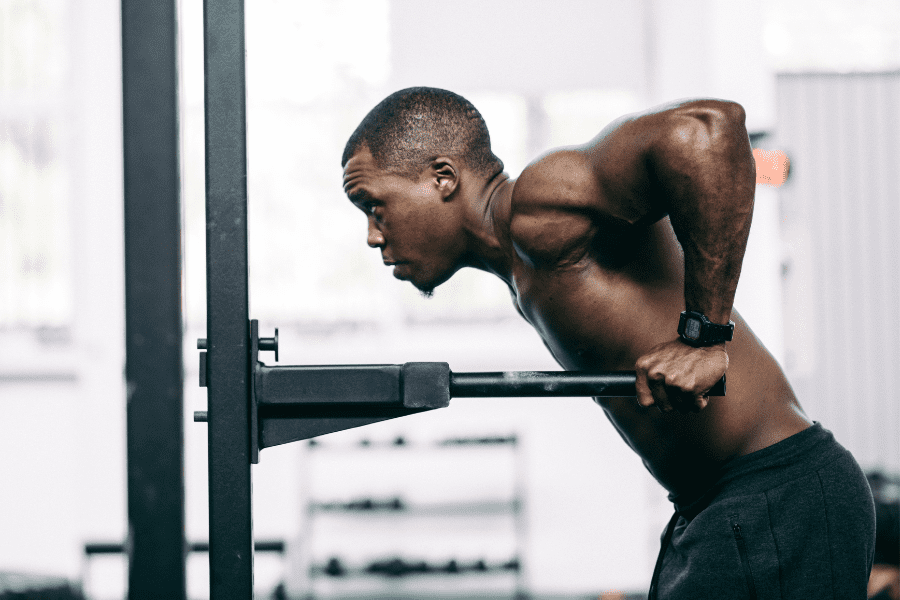
Dips are one of my all-time favorite pressing movements and I believe Dips are a great alternative for any upper-body pressing movement.
Like Push-ups, they’re also a bodyweight exercise – one that will be much more challenging than a standard Push-up.
Step By Step Instructions
- Position yourself on dip bars, gripping them firmly with your hands.
- Start with your arms fully extended and your body held straight, ensuring your shoulders aren’t shrugged.
- Slowly lower your body by bending your elbows, keeping them close to your sides. Descend until your upper arms are about parallel with the ground or as far as your mobility allows.
- Once you’ve reached the bottom of the movement, press back up by extending your arms and returning to the starting position.
- Throughout the movement, maintain a slight forward lean to better engage the chest muscles.
Coaching Points
The biggest mistake I see with Dips is a poor range of motion.
If someone is struggling to be able to do reps, the easiest solution is to simply not lower yourself into a full rep, but this is incorrect. If a lifter cannot perform a full rep they should use a resistance band for assistance or switch to an easier variation.
Medicine Ball Chest Pass
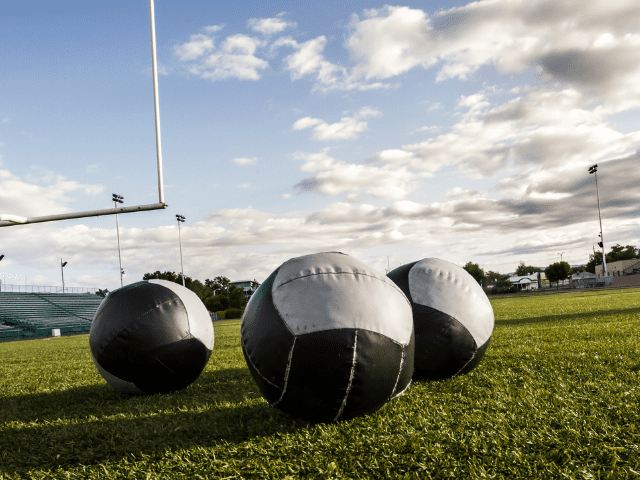
Utilizing a medicine ball is a great way to add some dynamic power to your upper-body workouts.
I would suggest pairing up Medicine Ball Chest Passes with Push-ups to get a combination of power and strength work.
How To
- Grab a medicine ball and a partner (or a solid wall)
- Start on your knees, sit back onto your calves and hold the ball at your chest.
- Explosively drive forward with the hips and throw the ball forward to your partner.
- The forward hip extension should cause you to fall forward.
- Catch yourself with your hands and then explosively push yourself back up to your starting position.
Coaching Points
Med Ball Chest Passes can be done from the knees as described above, but can also be done from a standing position. Regardless of what starting position you use, brace the core and be explosive!
Med Ball Push-ups
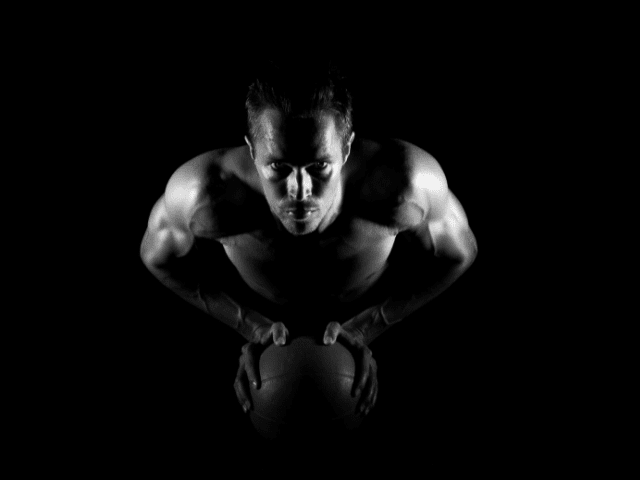
Medicine Ball Push-ups are a modified Push-up that has you placing both hands on a medicine ball instead of the ground.
This will generally make your grip narrower, placing more of an emphasis on the triceps. The medicine ball will also create some instability, which will keep the core engaged and the shoulder stabilizers working hard.
Step-by-Step Instructions
- Grab a medicine ball and find an open spot on the ground.
- Start on your knees and secure your hand placement on the ball first.
- Use a neutral grip hand position with palms facing one another on each outer edge of the ball.
- Now, lift the knees off the ground and raise up into a pushup starting position.
- Lower yourself down, keeping the elbows tight to the body as you descend.
- Lower down until the top of your abdomen (just below the sternum) touches the ball.
- Drive back up to the starting position.
Coaching Points
Perhaps the most important part of Med Ball Push-ups is getting the proper hand placement on the ball. Don’t be afraid to experiment slightly with what hand position feels best as it may change slightly depending on the type and size of the medicine ball you are using.
Keeping the elbows tight to the body is key here to make sure that the focus stays on the triceps.
Dumbbell Incline Fly
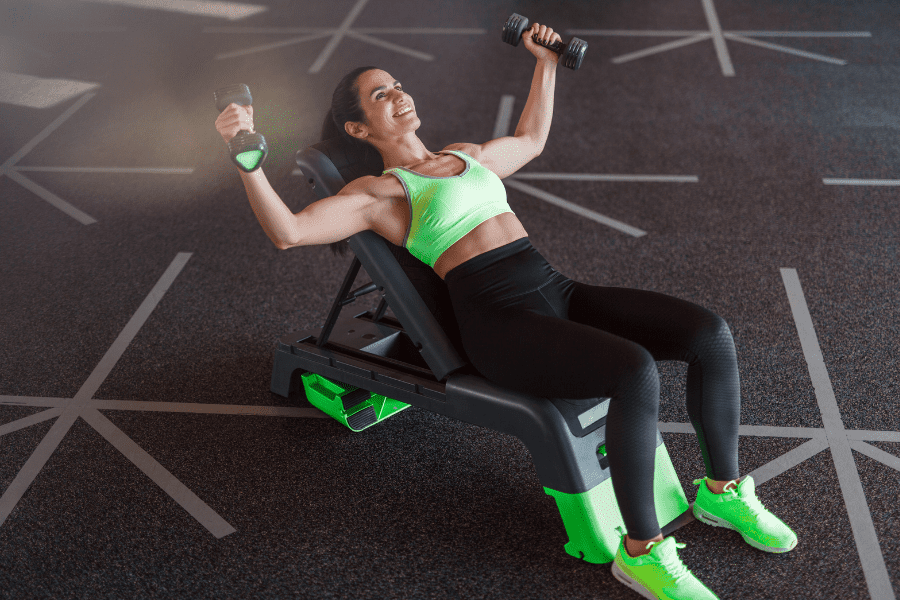
Dumbbell Incline Flys aren’t going to develop the same kind of strength as many of the Push-up alternatives listed above, but they’re great for extra hypertrophy work toward the end of a workout.
Step-by-Step Instruction
- Begin by setting an incline bench to an angle of about 30-45 degrees.
- Sit on the bench with a dumbbell in each hand, then lay back, positioning the dumbbells above your chest with arms slightly bent.
- With a slight bend in your elbows (imagine hugging a large tree), lower the dumbbells out to the sides in a wide arc. Ensure a controlled motion and feel the stretch in your chest.
- Once you’ve reached a point where you feel a good stretch, reverse the motion by squeezing the chest muscles and bringing the dumbbells back to the starting position.
Coaching Points
Remember as you move your bench up, the more you are engaging the shoulders and less chest. Be sure your angle matches the goals you’ve set for pressing.
Dumbbell Incline Flys should not be done with heavy weights. Stay relatively light, keep the movement very controlled and focus on the stretch.
Cable Crossover Flys
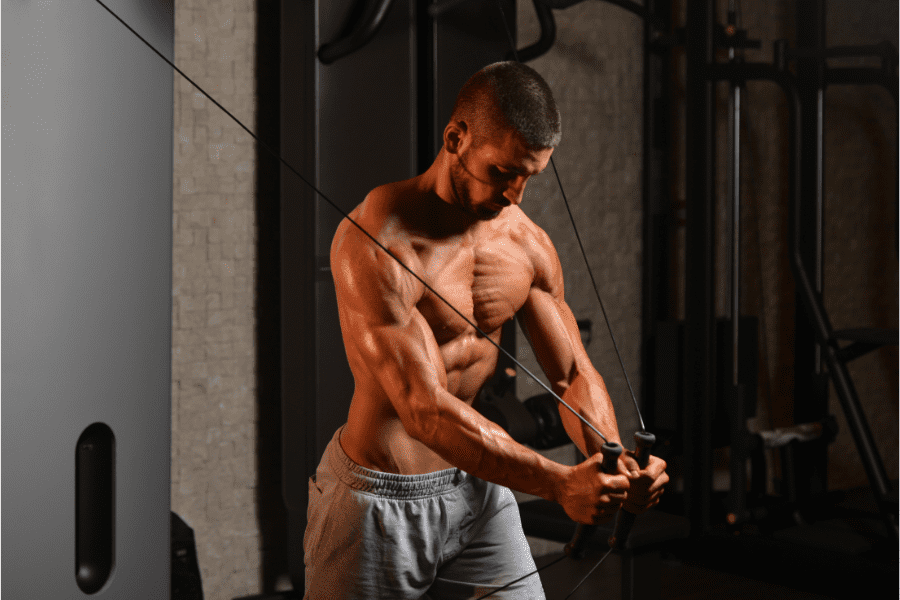
A gym favorite everywhere, Cable Crossovers are similar to the Incline Flys just above.
They’re not as much of a strength builder as Push-ups, but they can add some nice variety to your chest workouts.
How To
- Place single-handle attachments on both sides of a cable crossover machine.
- Stand with feet shoulder-width apart and a slight forward lean through the torso.
- Hold handles with your arms spread and a slight bend in the elbow.
- Press the cables forward until your hands touch. (crossing the arms in the front will add more emphasis to the upper pectorals)
- Slowly bring the hands back to the starting position and repeat.
Coaching Points
Make sure both pins on each side of your machine are on the same notch when doing Cable Crossover Flys.
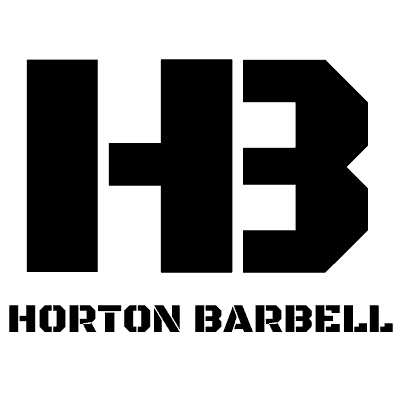
Get Shredded… For Free
Get a free workout Monday through Friday, posted right here on Horton Barbell. These workouts are designed to help you get strong, in shape and look great at the beach!
Final Thoughts
Push-ups are an excellent exercise for developing a strong upper body – specifically the chest, shoulders and triceps – but sometimes you might want an alternative for Push-ups.
In these situations, you’ll need a Push-up alternative and I hope that at least one of the exercises I’ve listed here fits what you were looking for.
More Links and Info
There is almost always an alternative exercise you can do for any movement, regardless of your limitations. Check out some alternatives for other popular chest exercises:

